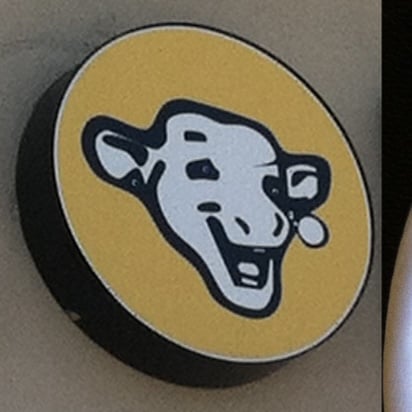

Did they (the gangs who asked for protection money) actually ever catch the people responsible or blamed to be responsible?


Did they (the gangs who asked for protection money) actually ever catch the people responsible or blamed to be responsible?


They are backslashes to escape the parentheses. But apparently the backslashes just get replaced with forward slashes.


The access to the real internet is restricted to a select number of elites and foreigners. Everyone else uses a private network called Kwangmyong.


Just saying, not even the government of China has managed to fully block VPNs. So if you really wanted to, there’s always a way. The only country that has successfully banned VPNs is North Korea, and they did it by disconnecting the entire country from the Internet.


Imagine having a choice for how you get to your destination
(this comment made by the American gang)
It would be cringe if you were using a shared server and set this as a default for everyone or if it was interfering with something. But if you’re just minding your own business I could not care less what customisations you put on your terminal as long as it isn’t using excessive resources
I think one other factor that people have not considered is the monitor. To run all games at 4K maximum settings, yes, this type of PC might be required. But at lower resolutions, such as 1080p or 1440p, this is overkill and one would be able to run any game as maximum settings even with a computer costing a third as much.


The actual reason: Gasoline prices in the United States were customarily displayed in cents per US gallon (about 3.8 litres). This means the sign originally read something like “15”, which meant $0.15 per gallon. Since the US has also a long history of pricing things in 9 or 99 (due to the psychological effect of such pricing), many service stations appended the extra 9/10 at the end to indicate 9/10 of 1 cent, which was a more meaningful price difference when the price of fuel was 15 or 25 cents and not two or three dollars. Legally, although the smallest cash denomination in the US is one cent, the US dollar can still be nominally divided into 1,000 “mills” for accounting purposes.
Inflation has caused the price of gasoline to rise, and when it passed $1 per gallon, service stations continued the same pricing traditions by just adding a third digit to the number. When digital price displays came on the scene, many of them continued to just display a three-digit number with the traditional 9/10 at the end, i.e. 123 9/10
New displays seem to have gotten rid of this tradition and just display a three-digit decimal number, i.e. 3.45 or 4.56.


In the US, number plates are in Highway Gothic which is designed to maximise legibility at a distance.


Yes, every US state sells vanity plates. In California it actually was a programme started by a certain actor who was governor at the time and later became one of the most well-known US presidents of the 20th century (Ronald Reagan).


Can’t say I agree. This is anecdotal but the council installed some camera-like devices on one of the main roads in my city and people got scared of them and slowed down as a result. I don’t think the cameras are actually turned on and issuing fines as I don’t know any people who have gotten a fine from them, but their presence scares people into safer driving.
Automated law enforcement in fields where guilt can be obviously and objectively determined (resist the urge to make a fallacious slippery slope argument) is, on average, a good thing. People’s tendency to bad behaviour is strictly because they think they won’t get caught. Telling people there’s a $500 fine for speeding means nothing because they know the chance of getting caught is in the neighbourhood of 1 in 10,000. Most people speed every day on every road they drive on but they get maybe 1 ticket every other year. But if they know that speeding on one particular road will result in a 90% chance of getting a $50 fine, they’re not going to speed on that road. That’s why the cameras are usually painted bright orange or white—to get people to see them and think “oh shit, I don’t want a ticket; I’d better slow down”.
As long as we have democratic control over our own local governments and strong privacy laws regarding how that data can be used, I do not view misuse of automated number plate recognition systems as a serious threat. In fact, I think it’s probably a net bonus. There’s a show called Police Interceptors which follows British police and it’s absolutely shocking how many stolen cars they recover because someone drove it past an automated number plate recognition camera and it got flagged.


Random number plates are still likely to reduce the number of possibilities to just a few, likely visually distinct, cars.


That issue is not really the problem of the camera though. That’s like saying you don’t like running water because people have drowned in water before. If the cameras are being misused then that is a political issue.
In my city, the police department operates the cameras and they will send at least one warning before you get a fine unless the violation is very egregious (e.g. double the speed limit in a school zone)


The current system does not issue plates with I or O.


Say what you will about electronic plate readers but they do make speed and red light enforcement and toll collection much easier. And be honest, most people only dislike them because they make it harder to get away with bad driving habits that people previously took for granted that they could get away with.


I think you’re grossly exaggerating the difficult of memorising alphanumeric number plates:
GL7KKUQTHUP70123WD2C1WWQG21AP92BTQYThese were randomly generated and really not that bad to remember. Especially if the system is designed so that you only need to remember the first/last four or five digits. Compare to these (found at random on the Internet) number plates under a mix of the two current schemes:
752EPS47WMT5139AYE877648GDG6Edit: What I really mean to say here, is that random number plates makes memorising the entire number plate unnecessary. You can get away with just remembering the first four digits and the car’s make, model, and colour. As long as fewer than 1 million (32^4) cars of the same model and colour are registered, this system guarantees that a car is uniquely identified by its colour, model, and first four of its number plate (i.e. “I was hit by a red Tesla Model X whose plate starts with EL0N”)


I guess that’s true but number plates are typically read by cameras anyway. They are primarily used by speed/red light cameras, toll collection systems, and law enforcement.
If you assign random numbers to cars, it’s pretty likely that the last four or five digits plus the make and model of the car will uniquely identify a vehicle or at least narrow it down to just a few possibilities. If the assignment software is smart it could probably even guarantee this uniqueness.


It doesn’t matter if there are number plates that already have those letters, but the idea is to stop issuing new ones with them.


I wonder what the practical reason is for not just allowing full alphanumeric number plates. Each digit would then have 32 possibilities (I, O, Z, and S should be avoided to prevent confusion with 1, 0, 2, and 5). This gives 34.36 billion possible number plates which seems sufficient for at least the next couple years.
The Sovereign Grant was some £86 million, which certainly sounds like a lot, but the reality is that heads of state are actually just really expensive no matter whether you have a republic or a monarchy. Maybe you could argue that a president could just quietly exist in the background while people expect a monarchy to be lavish and fancy, at least to a degree. There’s a lot of pomp and ceremony associated with the head of state, because they not only represent the government of a country but also serve as a cultural symbol for the nation as a whole.
For comparison, in the US, excluding the policy departments within the Executive Office, the White House Office and Executive Residence and presidential salary budget lines totalled almost $94 million in FY 2025. This does not include the cost of Secret Service protection (paid by the Department for Homeland Security) nor does it include the cost of Air Force One trips (paid by the Department of Defence). And while Brits complain about their monarch not having to pay tax, I think the fact that the American president, or at least the current one, cheats on his taxes is also a somewhat open secret.
I’m American and technically also British despite never having been there (I hold a type of second class citizenship through Hong Kong), and I honestly think £86 million is a bargain for the UK monarchy considering their cultural draw and the fact that they’re not just the head of state of the UK but a dozen other countries as well.
Now, one can argue all day about whether it’s appropriate to have a monarchy in the modern day, even if that institution were to be discharged of even theoretical political power like it is in Japan, and whether such an institution is compatible with democratic principles like the rule of law, but that’s something I’m wholly unqualified to opine about.